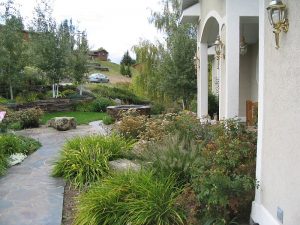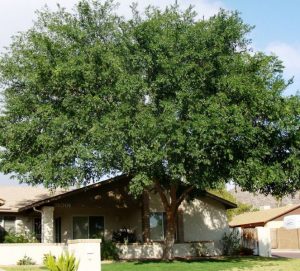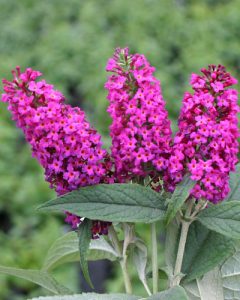 Most homeowners recognize the need to remodel the insides of their homes but don’t realize that their landscaping also benefits from updating and refreshing. An old, stagnant landscape loudly declares, “Look how old and outdated I am!” Even worse, a landscape can be like the married old codger who, on his silver wedding anniversary asked, “I said I loved her on our wedding day; why does she need to hear that I love her years later?” Your landscape can use some “spiffing up” every spring or she quickly will appear dated, unkempt, and haggard. Fresh, strategically placed plants demonstrate that you care.
Most homeowners recognize the need to remodel the insides of their homes but don’t realize that their landscaping also benefits from updating and refreshing. An old, stagnant landscape loudly declares, “Look how old and outdated I am!” Even worse, a landscape can be like the married old codger who, on his silver wedding anniversary asked, “I said I loved her on our wedding day; why does she need to hear that I love her years later?” Your landscape can use some “spiffing up” every spring or she quickly will appear dated, unkempt, and haggard. Fresh, strategically placed plants demonstrate that you care.
The average kitchen remodel is currently at $20,000, without new appliances. Complete renovations quickly reach the $45,000+ range. A remodel of your landscape is quicker, easier, and cheaper than remodeling any other part of your home. Updating is important because the landscaping is the first and the last impression guests and neighbors have of your home.
Landscape plants occasionally need to be trimmed, shaped up, or cut down. For example, hedges are meant to accent your home, not hide it. Now is a good time to cut back overgrown hedges. If necessary, cut them back by a third. They’ll be shorter and appear ugly at first, but will grow back quickly at the start of our growing season. Give them ‘All Purpose Plant Food 7-4-4‘ right after pruning and bright new leaves will emerge within a few weeks.
When remodeling a landscape, keep in mind that some plants can be used to highlight the yard. Excellent plants for this purpose are the new miniature butterfly bushes. A host of blue and purple flowers adorn these showy shrubs that love our summer heat and thrive on minimal care. Butterflies drool over the six-inch flowers and their super sweet fragrance. These bushes happily take to the hottest spots in the yard, and also do well in containers, raised beds, and borders. Except for butterflies and hummingbirds, they are not attractive to wildlife; even deer do not care for the taste.
My loose definition of a weed is any plant in the yard that is unwanted. So I say don’t be afraid to clear out and replace old tired looking plants with fresh new ones. This is especially true for plants damaged by the severe winter we had. Many plants in the yard were brutalized or killed by January’s sustained cold. It can take years for uglified plants to recover once they are damaged. Ugly plants can be relocated to a remote place in the yard and replaced with fresh new ones. Spring is a time of freshness and renewal, and new plants in a yard embody this spirit. In gardening this is much like an interior designer changing the paint on the walls. Remodeling a landscape refreshes the outside appearance of a house, and it’s surprising how much better the gardener feels, too!
~~ ~~ ~~ ~~ ~~ ~~ ~~
A seasonal transition has taken place at local garden centers. Spring blooming lilac, forsythia, mock orange and almond have been replaced with selections of showier summer shrubs. Rose of Sharon, butterfly bushes, jasmine, Russian sage, and native yucca all show off the fragrances from their colorful blooms. They love the warmth of our late spring weather and all transplant well into summer.
~~ ~~ ~~ ~~ ~~ ~~ ~~
WATERING NEW PLANTS – Dry native soil can wick away moisture from newly planted trees and shrubs. So for plants that have been in the ground for less than a year it is necessary to supplement your irrigation system. Once a week hand water your new plants so the surrounding soil becomes saturated. The additional water adds moisture to the soil surrounding the root ball and maximizes your gardening success. Supplement with hand watering until the monsoonal patterns return in July.
~~ ~~ ~~ ~~ ~~ ~~ ~~
SHADE TREES REDUCE CRIME – The  conclusion of an interesting U.S. Forest Service study showed that trees and gardens influence neighborhood crime reduction. Quoting from the results, “a 10% increase in leaf canopy was associated with a 12% drop in crime”. “The neighborhoods that had more trees and gardens seemed to have less crime.” The study connected the dots to conclude that the more trees, the more shade . . . the more shade, the more people want to spend time outdoors . . . and the more people spending time out of doors, the more “eyes on the street” tends to deter crime.
conclusion of an interesting U.S. Forest Service study showed that trees and gardens influence neighborhood crime reduction. Quoting from the results, “a 10% increase in leaf canopy was associated with a 12% drop in crime”. “The neighborhoods that had more trees and gardens seemed to have less crime.” The study connected the dots to conclude that the more trees, the more shade . . . the more shade, the more people want to spend time outdoors . . . and the more people spending time out of doors, the more “eyes on the street” tends to deter crime.
We should start a new local campaign with the slogan: “Plant a tree, stop a crime”.
Until next week, I’ll see you at the garden center.
http://wattersgardencenter.com/2013/new-plants-in-a-garden-are-like-fresh-paint-on-a-wall/ New Plants in a Garden are Like Fresh Paint on a Wall

No comments:
Post a Comment